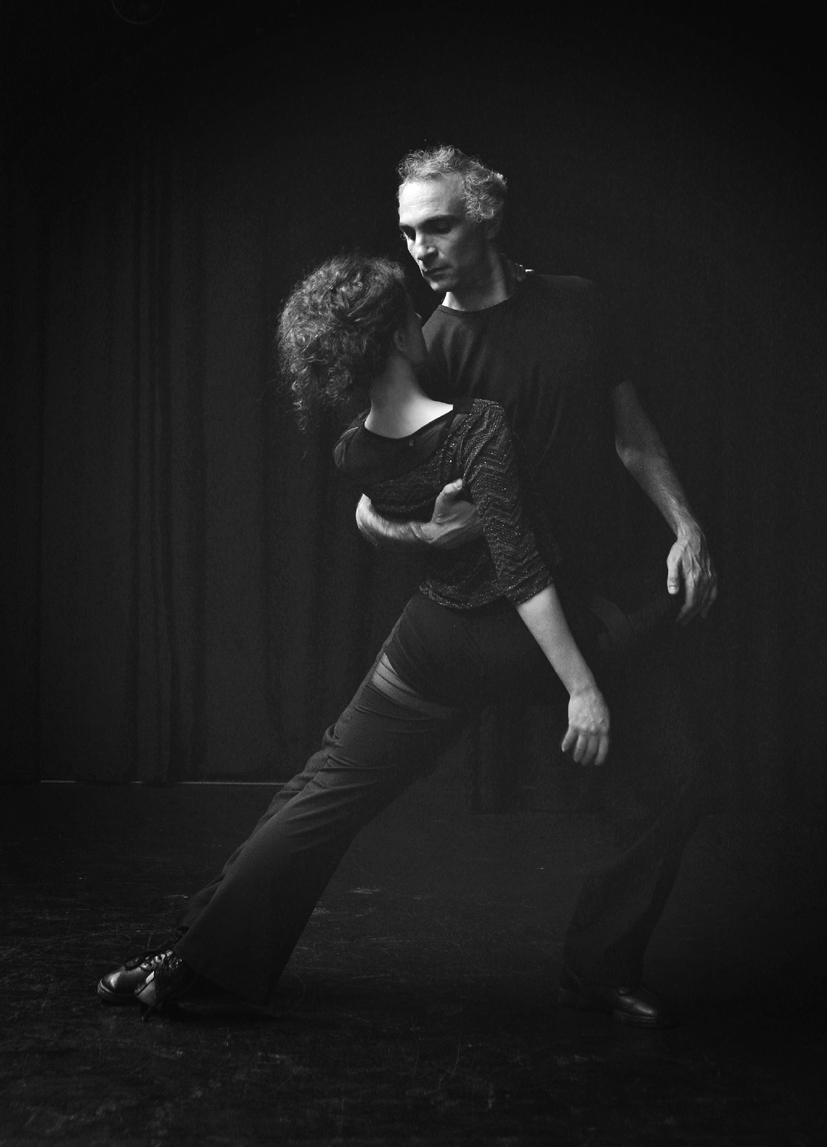Daniel Canuti in Youtube
Four pillars of Tango
The ongoing development of the following four areas is what allows us to improve our dancing, every time with higher awareness and knowledge, which in turn makes our tango dancing a more complete and pleasurable activity.
1- Structure: It is a complete alphabet that lets us improvise and dance in a sequence of steps without regarding them as fixed figures (phrases). The three types of steps, the two-leg systems (parallel leg system and crossed leg system), the directions, and their difference regarding turn directions and changes of turn directions.

Workshop: OVERALL STRUCTURE OF TANGO: LEARN THE MAP OF YOUR DANCE! As in every art, craft or science, there is a structure. Tango structure can be described with a few very easy concepts. The exploration that follows after using this structure takes longer but it is hugely facilitated by this knowledge. Knowing the structure saves you years of frustration in trying to put the moves together. This workshop is essential for the one that follows, as it prepares you for it!
Workshops with Elements (do not confuse these with steps), such as:
- Sacadas: Front cross, Back cross, Open step, (for Leader and Follower)
- Boleos: Front cross, Back cross, Open step, (for Leader and Follower)
- Ganchos (for Leader and Follower)
- Volcadas and Colgadas
- Barridas (for Leader and Follower)
- Lyrics Elements (Lápiz, Enrosques, Planeos, etc.)
2- Tango musical structure: Using the main rhythmic and melodic possibilities of the bb. 4-4, Accents, Phrases, and parts of a tango.
Workshop: Musicality
Musical structure of Tango, Milonga, and Vals.
Accents and structures of each phrase.
What it means for a dancer to be a part of a bar, a beat, an accent, a phrase (question phrases and answer phrases in musical terms).
Together we will identify these musical elements and musical parts and learn how to use them in the development of our dance, as in Boleos, Sacadas, etc.
Workshop: Milonga, in three different levels.
Workshop: Vals, in three different levels.

Workshop: THE JOY OF IMPROVISATION, LET’S HAVE FUN! This workshop is ideally taken after the previous one, as knowing the structure helps you improvise. Yes, everyone will always tell you that Tango is an improvised art, but it isn’t simply that, and you can’t just do anything you want. There are rules and principles we have to follow. And in knowing those, you will discover maximum freedom of expression!
3- Lead and follow: What the leader –traditionally the man leading the woman– does to have the follower achieve the desired movements. What the leader does to make the follower take this or that way, in order to express the dynamics that we, as leaders, have in mind. The expression of the gestures, the clues: movements made by the leader that are meant to induce a movement in the follower, as the latter may understand them or not. Awareness on the part of the follower in order to understand the leader.
Workshop: IMPROVE COMMUNICATION WITH YOUR PARTNER. Through a series of specific exercises and games you will be working on different aspects of your communication with your partner. This workshop will change your approach to dancing.

4- Technique: How movements are carried out: how certain steps are made of different qualities, depending on whether we mean them to be tied together, as in legato, or broken, as in staccato. The performance of elements that take place between steps, such as boleros or ganchos.
Learning through exercising a technique is usually hard work and it isn’t all fun, but it is essential. Complete involvement from the participants is strongly required.
Embrace techniques:
The embrace in tango.
Different types of embrace.
Change of arms during the dance.
Type of embrace that is more adequate for each given situation.

Workshop: Leader’s and Follower’s Technique
Workshop: The embrace
These four pillars of tango dance are equally highly important; as we are dancing, they are constantly overlapping, intertwining and influencing one another. However, they are studied separately for a better understanding and initial development.
When these areas are wholly active in each dancer, namely the innumerable types of embrace, the quality of movements, the dissociation, the various postures and elegant poses, the so-called styles are necessary to achieve a given movement and they are, at the same time, a consequence of such movements. Thus, and although it is not the objective in itself to be pursued, there emerges a unique visual result.
